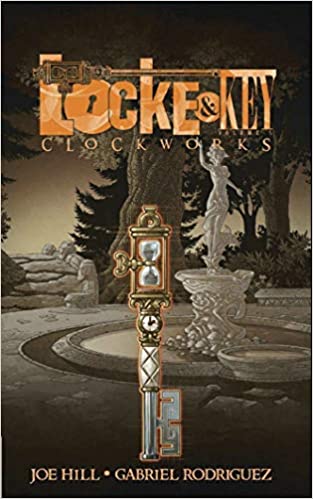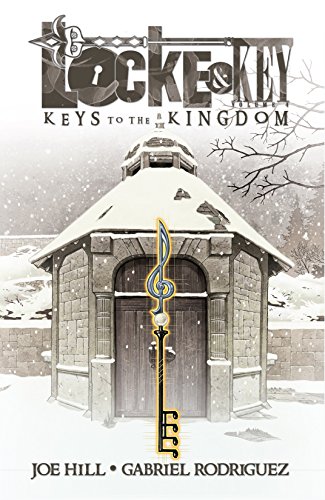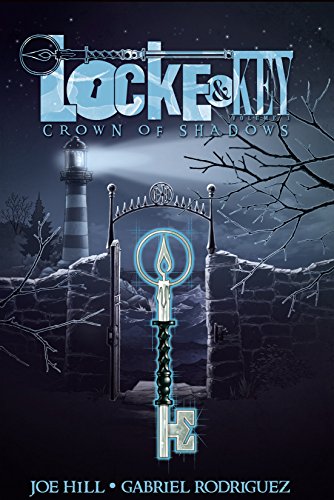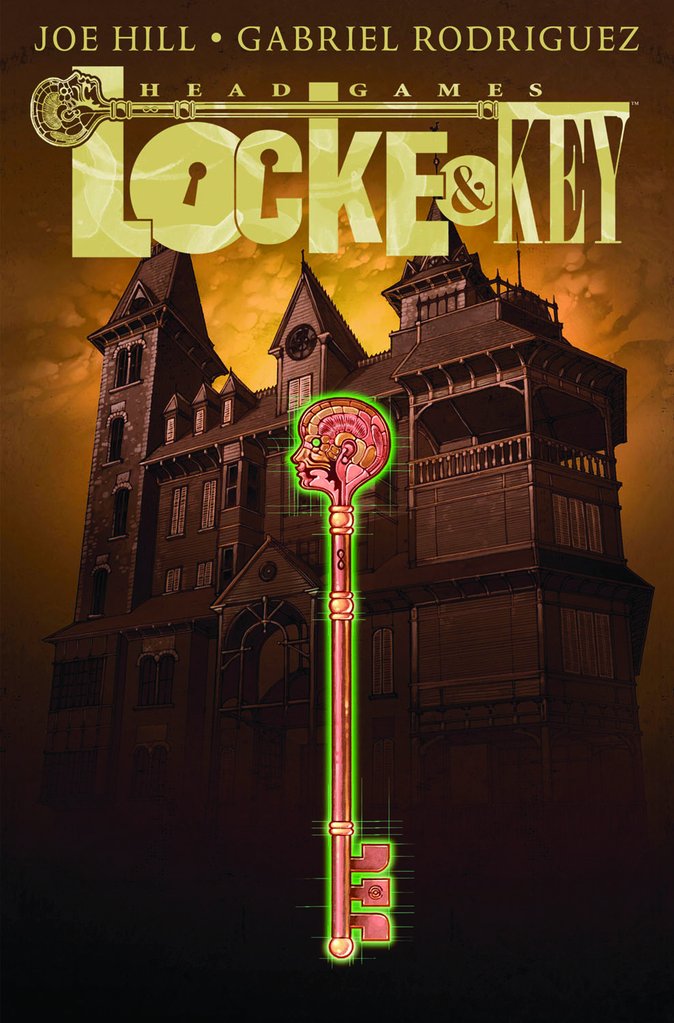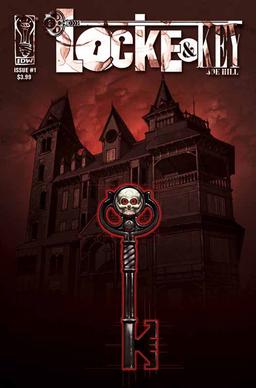written by David Steffen
I’ve spent the last several months reviewing award nominees. I decided to take it one step further and post the final decisions that I plan to post to my Hugo ballot with explanations (where I deem them necessary) about why I voted the way I did. I encourage anyone reading this to post discussion in the comments about how they voted, why I am wrong in my choices, etc.
What makes this more interesting is that the Hugo Awards use an instant runoff voting system. You rank your changes from 1-x, and can also set a number to the “No Award” category. You can find all the nitty gritty details at the Hugo Page explaining votes. I like the system a lot, much more than just a simple single-cast vote, because if your primary vote is for the least popular story, your other preferences still count for something.
If you are a nominee, keep in mind that I am just judging these based on my own preferences and, though I aim to not make my reviews mean, if you don’t want to hear my honest opinion of your work than you might want to skip this article.
For a full list of the nominees, see the original announcement on the Hugo site.
Best Novel
1. Redshirts, John Scalzi (Tor; Gollancz)
2. Throne of the Crescent Moon, Saladin Ahmed (DAW; Gollancz ’13)
Reasoning: I’ve only had time to read one book and a partial so far. I finished Redshirts and reviewed it here–I enjoyed it quite well, though there were some parts I didn’t like it was huge amounts of fun. I’ve started Throne of the Crescent Moon but haven’t finished it yet. Throne of the Crescent Moon is a solid book so far, but even though it has the strength of being set in a non-European based fantasy world, it still lacks the novelty that Redshirts has for me.
Best Novella
1. The Emperor’s Soul by Brandon Sanderson (Tachyon Publications)
2. After the Fall, Before the Fall, During the Fall by Nancy Kress (Tachyon Publications)
3. San Diego 2014: The Last Stand of the California Browncoats by Mira Grant (Orbit)
4. The Stars Do Not Lie by Jay Lake (Asimov’s, Oct-Nov 2012)
5. No Award
Reasoning: The only story that I disliked enough to prefer no award was “On a Red Station, Drifting” by Aliette de Bodard. See my Novella Hugo 2013 Review for more detail.
Best Novelette
1. In Sea-Salt Tears by Seanan McGuire (Self-published)
2. The Boy Who Cast No Shadow by Thomas Olde Heuvelt (Postscripts: Unfit For Eden, PS Publications)
3. Rat-Catcher by Seanan McGuire (A Fantasy Medley 2, Subterranean)
4. The Girl-Thing Who Went Out for Sushi by Pat Cadigan (Edge of Infinity, Solaris)
5. No Award
Reasoning: The only story that I disliked enough to prefer no award was “Fade to White” by Catherynne M. Valente. See my Novelette Hugo 2013 Review for more detail.
Best Short Story
1. Immersion by Aliette de Bodard (Clarkesworld, June 2012)
2. Mono No Aware by Ken Liu (The Future is Japanese, VIZ Media LLC)
3. No Award
Reasoning: The only story that I disliked enough to prefer no award was “Mantis Wives” by Kij Johnson. See my Short Story Hugo 2013 Review for more detail.
Best Graphic Story
1. Locke & Key, Vol. 5: Clockworks, Joe Hill, art by Gabriel Rodriguez (IDW)
2. Schlock Mercenary: Random Access Memorabilia Howard Tayler, colors by Travis Walton (Hypernode Media)
3. Saga, Volume One, Brian K. Vaughn, art by Fiona Staples (Image)
4. No Award
Reasoning: See my Graphic Story Hugo 2013 Review for more detail.
Best Dramatic Presentation, Long Form
1. The Cabin in the Woods
2. The Avengers
3. The Hunger Games
4. Looper
5. The Hobbit
Reasoning: See my Dramatic Presentation, Long Form Hugo 2013 Review for more detail. I didn’t regret the time spent on any of the movies, so I gave them all a rank.
Best Dramatic Presentation, Short Form
1. Game of Thrones, “Blackwater”, Written by George R.R. Martin, Directed by Neil Marshall. Created by David Benioff and D.B. Weiss (HBO)
Reasoning: I’ve never seen an episode of Dr. Who (gasp!), so I can’t comment on the show in any way. I’ve only ever seen the pilot episode of Fringe, which did not inspire me to watch further even though I was excited about the show from the trailers. But my wife and I are avid watchers of the Game of Thrones series. The show is really solid throughout, great writing, casting, special effects, set design, costume design, everything is really stellar. And this episode was an especially awesome episode of a major battle, with great tension and great action all around. Even if I had been familiar with any of the other nominees, it likely would’ve come on top.
I don’t have anything against any of the other four winning the award, so I’m not casting a “No Award” vote for this category. I’m sure that one of the Dr. Who episodes will win anyway.
Best Editor, Short Form
1. Neil Clarke
Neil does great work at Clarkesworld, and I look forward to every episode of Clarkesworld. I tend to have a bit of a polar reaction to Clarkesworld stories. I either love them or don’t get them at all. But when I love them, the stories are well worth listening to the others to get to. Also, as a writer, I appreciate Clarkesworld’s lightning-fast response times.
2. John Joseph Adams
I enjoy listening to the Lightspeed podcast as well. I tend to have a polar reaction to Lightspeed stories as well, and a similar appreciation for lightning-fast response times, and it was hard to decide which to rank higher. He and Neil are ranked close enough in my mind that it’s almost a toss-up between the two and I just gave Neil the edge because he’s been a head editor longer. It’s for cases like this that I really appreciate the instant runoff voting.
3. Stanley Schmidt
I am often not a huge fan of Analog stories, often too nuts-and-bolts for me. But they’ve published some really great ones. I will immediately buy any issue with Juliette Wade in the pages, because her linguistics-based SF stories that have run there are among my favorites. There was a Wade story last year, too, a definite bonus. This was Stanley’s last year as editor so it would be neat to see him win, but I’d rather vote based on who I thought was the best rather than nominating for warm fuzzies about the guy who retired.
4. Sheila Williams
I don’t read Asimov’s very regularly, simply because they don’t have a podcast. I have read good stories in the issues that I’ve bought, so I’d have no complaints about her winning.
Reasoning: I’m not familiar with Jonathan Strahan one way or the other. I’m not going to cast a vote for him, but I’m also not casting a “No Award” either.
Best Professional Artist
1. Dan Dos Santos
Dan Dos Santos is awesome. I have a print of his depiction of Moiraine Damodred on my office wall. I love his other art as well, such as his Warbreaker cover. He just has a very skilled hand and great eye. I rarely enjoy others’ cover art as much as his. His character art in particular is really great–the examples in the Hugo packet are good ones, especially the baby-toting warrior woman, and the punk woman in the bathroom.
2. John Picacio
I picked for a large part because of the Hyperion cover with the elaborate mechanical monstrosity holding a human infant. His other covers are really good too.
3. Julie Dillon
I LOVE the “Afternoon Walk” image, with all the monsters being walked like dogs in the park.
4. Chris McGrath
I like the gritty style of these, almost like found photos of fantastical places.
5. Vincent Chong
Reasoning: They always say not to judge a book by its cover, but in this case I had to judge the artist by his cover. The only one I’m very familiar with is Dos Santos, so I had to judge based only on the samples. This was a hard category to pick favorites. I would not be disappointed for any of these five who won the award. But, I’ve gotta pick someone.
Best Semiprozine
1. Beneath Ceaseless Skies
2. Clarkesworld
3. Lightspeed
4. Apex
5. Strange Horizons
Reasoning: See my Semiprozine Hugo 2013 Review for more detail.
Best Fanzine
1. SF Signal
Reasoning: I’ve enjoyed going to SF Signal for various content for years, so I’ll happily give them my vote. The other four I am aware of, but have never read. I’m not using the “No Award” vote, because I don’t have anything against the other four.
Best Fancast
1. No Award
2. SF Squeecast
3. SF Signal Podcast
4. Galactic Suburbia Podcast
5. The Coode Street Podcast
Reasoning: This is the second year that the Best Fancast category has been running, and all five of last years nominees are nominated again. This makes me think that no one is actually listening to them and is just nominating past nominees as a habit. I think this may also have to do with confusion over the classification of podcasts who pay their authors, like Escape Pod, Pseudopod, Escape Pod, Drabblecast, and so on. By the word of the rules, these would all be considered Fancasts but many people might guess that they would be classified as Semiprozines. I asked the question of the Hugo committee long before the nomination period ended to clarify publicly the classification of these, but they never responded to me. This is hurting my favorite magazine’s chances of getting award nominations because anyone who wants to nominate them may be splitting across categories. I was very disappointed that the Hugo Committee didn’t respond to my question.
In large part to raise my small voice of protest about the Hugo Committee’s lack of clarification, I am choosing No Award as my primary vote. I would love to see a quality fiction podcast get award nominations, and maybe even win. No offense to the nonfiction podcasters who do good work, but if I wanted to listen to a conversation about SF I would just talk to someone about SF. It’s the stories that I’m here for. And if my favorite fiction podcasts aren’t allowed into the category, then I’m not interested in the category.
It also bothers me that StarShipSofa is the lone fiction podcast representative, because their constant over-self-promotion, Hugo vote begging, unfiltered content , lack of payment is just too many factors that bother me about them. And that’s even not including the aborted nonfiction project they had planned some years ago to supporting a plagiaristic audio adaptation–it was aborted when the moral problems were pointed out to Tony, but I felt that an editor shouldn’t need to have this pointed out to him. It may seem wrong to criticize a “fancast” nominee for unprofessional policies, but venues like Escape Pod and Toasted Cake have shown me that just because a podcast is staffed by volunteers in their spare time doesn’t mean that there have to be no standards.
So I’ve ranked the four nonfiction podcasts about StarShipSofa so that even if “No Award” gets eliminated as a possibility, I’ll be encouraging one of the others to get the award rather than StarShipSofa.
Best Fan Artist
1. Spring Schoenhuth
I love the jewelry designs of Schoenhuth, particularly the Robot Transformation, and the Four Electron Atoms designs. I don’t generally wear jewelry other than my wedding ring but those make me want to start.
2. Galen Dara
a really neat dreamlike style. I particularly like the Ghost River Red image. It feels like a story, and the vivid reds of the hero and the shadowy adversary are very eye catching and intriguing.
3. Brad W. Foster
4. Maurine Starkey
5. Steve Stiles
Reasoning: As with the Professional Artist category, I had to judge these by their samples and would not be disappointed if any particular one of these won, but again i have to choose.
The John W. Campbell Award for Best New Writer (Not a Hugo)
1. Mur Lafferty
Reasoning: I confess that Mur is the only one whose stories I am familiar with, and I ran out of time to read the contributed works of the other authors. So, certainly no reason to use the No Award, but my lone vote is cast for Mur.
Conclusion
And that’s my take and my voting strategy on all of the categories where I picked up enough of the material to be able to cast votes. There are three categories that I didn’t touch at all: Best Fan Writer, Best Editor Long Form, and Best Related Work. In the In the Related Work category, I did not have time to read any of the nominees. In the Fan Writer and Editor Long Form, I am unfamiliar with these people’s work.
How did you vote? Care to share, drop a comment. I’ve enjoyed putting this together, and I think I’ll try to do the same series of articles again next year. Let me know if you enjoyed it, folks! Do you find it appealing to see how someone else spent his votes?
